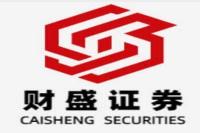Huawei's HarmonyOS Trademark Spree: A Deep Dive into Brand Expansion and Market Strategy
Meta Description: Huawei's HarmonyOS trademark filings for "HarmonyOS Enjoy," "HarmonyOS Vitality," and "HarmonyOS Audiovisual" signal a significant brand expansion. This in-depth analysis explores the implications for Huawei's market strategy, competitive landscape, and future product lines. We delve into the intricacies of intellectual property protection, brand building, and the evolving tech ecosystem.
Imagine this: a tech giant, already a force to be reckoned with, quietly but strategically filing trademarks for a range of new products and services under its burgeoning HarmonyOS ecosystem. That's exactly what Huawei has done, sending ripples through the tech world. The recent filings for trademarks like "鸿蒙智享" (HarmonyOS Enjoy), "鸿蒙活力" (HarmonyOS Vitality), and "鸿蒙影音" (HarmonyOS Audiovisual) aren't just legal formalities; they're a powerful statement of intent, a glimpse into Huawei's ambitious roadmap, and a fascinating case study in brand building and market penetration. This isn't just about legal protection; it's a strategic chess move in a highly competitive global tech arena. We'll dissect the implications, examining the potential product lines, competitive landscape, and the overall significance of these moves for Huawei's future. Get ready to unravel the mysteries behind Huawei's bold strategic play! It’s a fascinating deep dive into the world of intellectual property, global brand management, and the ever-evolving technological landscape. Are you ready to explore the fascinating world of trademarks, brand building, and the future of HarmonyOS? Let's dive in!
HarmonyOS Trademark Filings: A Strategic Masterstroke?
Huawei's recent trademark applications for "HarmonyOS Enjoy," "HarmonyOS Vitality," and "HarmonyOS Audiovisual," among others, aren't just random filings; they represent a clear strategic direction. These aren't just names; they're potential brand umbrellas for entire product lines. This proactive approach to intellectual property (IP) protection showcases Huawei's commitment to securing its position in the market and safeguarding its innovative efforts. It's a smart move, not just to protect existing products, but to lay the groundwork for future expansion.
Think about it: "HarmonyOS Enjoy" hints at a focus on user-friendly, accessible devices and services. Perhaps we're looking at a range of entry-level smartphones, budget-friendly wearables, or even simplified user interfaces for smart home appliances. "HarmonyOS Vitality," on the other hand, could signify a focus on fitness and health-related technology. Imagine smartwatches with advanced health monitoring capabilities, fitness tracking apps seamlessly integrated into the HarmonyOS ecosystem, or even innovative health management solutions. And "HarmonyOS Audiovisual"? This suggests a significant push into the entertainment sector – possibly including high-quality audio devices, advanced streaming services, or even partnerships with content providers.
The Competitive Landscape and Huawei's Play
Huawei operates in a fiercely competitive global market. This move isn't just about protecting its current position; it's a proactive approach to maintain and expand market share. By securing these trademarks, Huawei is effectively staking its claim in various emerging tech sectors. This preemptive strategy prevents competitors from capitalizing on similar branding, securing a competitive edge. The strategic significance cannot be overstated. It's a move that shows meticulous planning and a clear understanding of the market dynamics.
Consider the implications for established players like Apple and Google. Huawei's expansion into various sectors puts pressure on these giants, forcing them to adapt and innovate to remain competitive. It's a bold move, and it’s shaping up to be a strategic game-changer. The ramifications are far-reaching and will undoubtedly impact the overall technology landscape.
The Importance of Intellectual Property Protection
The act of trademark registration itself is a crucial component of a successful business strategy. It’s not just about protecting brand identity; it’s also about safeguarding the company's investment in research and development. These trademarks represent significant financial and intellectual investment, and their protection is paramount. The process of trademark registration can be lengthy and complex, but the benefits far outweigh the costs.
Protecting intellectual property is a foundational aspect of building a sustainable and successful business. Huawei’s actions demonstrate a deep understanding of this principle. It's a testament to their commitment to long-term growth and stability. This isn’t just about legal compliance; it’s about strategic foresight and a commitment to innovation.
Understanding the Trademark Application Process
The trademark application process typically involves several stages, from initial filing to final approval. Huawei's applications are currently in the "waiting for substantive examination" phase. This means that the applications have been filed, and the relevant authorities are now reviewing them for compliance with various regulations and requirements. This phase can take several months, even years, depending on the workload and complexity of the application.
During this period, the applications are subjected to rigorous scrutiny to ensure that they meet all the required criteria. This might include checks for conflicts with existing trademarks, assessments of the distinctiveness of the mark, and verification of the applicant's eligibility.
International Classification and Market Reach
The international classifications associated with Huawei's applications (advertising sales, communication services, website services) are strategic choices. These classifications broaden the scope of potential product and service offerings under the HarmonyOS umbrella. It's a shrewd move that allows for future expansion into related markets. The wider the classification, the more comprehensive the protection granted by the trademark. This allows for greater flexibility and adaptability in future product development and expansion.
The Future of HarmonyOS and Huawei's Strategic Vision
Huawei's moves suggest a long-term strategy focused on expanding the HarmonyOS ecosystem beyond smartphones. The company is clearly aiming to become a major player in various sectors, leveraging its technological expertise and brand recognition. This move signals a commitment to long-term growth and a clear vision for the future. The implications are far-reaching, and we can expect to see a significant expansion of the HarmonyOS ecosystem in the coming years.
This proactive approach to brand building and IP protection is a masterclass in strategic planning. It shows a clear understanding of market trends and a commitment to securing Huawei's place as a major player in the global technology arena. The future of HarmonyOS looks bright, and these trademark filings are a significant step in that direction.
Frequently Asked Questions (FAQs)
Q1: What is HarmonyOS?
A1: HarmonyOS (also known as Hongmeng OS) is Huawei's proprietary operating system designed for a wide range of devices, including smartphones, tablets, smartwatches, and IoT devices. It's a microkernel-based OS, providing flexibility and security advantages.
Q2: Why are these trademark filings significant?
A2: These filings showcase Huawei's strategic plan to expand the HarmonyOS ecosystem into new market segments. They're a way to protect its brand and secure future growth opportunities.
Q3: How long does the trademark application process usually take?
A3: The process can vary significantly, taking months or even years depending on the complexity and workload of the relevant authorities.
Q4: What are the potential implications of these trademarks for consumers?
A4: Consumers can expect to see a wider array of devices and services leveraging the HarmonyOS ecosystem, potentially offering greater choice and integration across different product categories.
Q5: Will these trademarks impact other tech companies?
A5: Yes, this assertive move will likely increase competition and pressure other tech giants to innovate and adapt their strategies accordingly.
Q6: What are the benefits of securing these trademarks for Huawei?
A6: The primary benefits include brand protection, market expansion opportunities, and strengthened competitive positioning in the global tech market.
Conclusion
Huawei's recent trademark filings for HarmonyOS-related brands are more than just legal formalities; they're a strategic masterstroke that signals a significant expansion and long-term vision. This proactive approach to intellectual property protection, coupled with a clear understanding of market dynamics, positions Huawei for continued growth and success in the fiercely competitive global tech market. The implications of these moves are far-reaching, and it will be fascinating to observe the evolution of the HarmonyOS ecosystem in the years to come. The future looks bright for Huawei, and this strategic expansion is a critical part of their ambitious roadmap. Stay tuned – the story is far from over!



